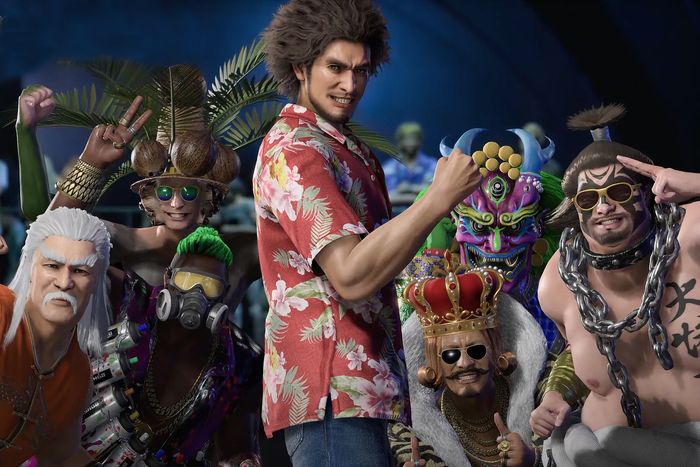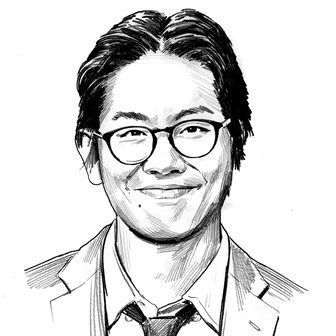
You can probably find a decent metaphor for the Yakuza games, recently rebranded as Like a Dragon here in North America, in the voluminous hair of its newish protagonist, Ichiban Kasuga. It’s messy, excessive, and cartoonish, but with a real charm that grows on you the more time you spend with it. This is as true for the original 2005 Yakuza as it is for Like a Dragon: Infinite Wealth, the ninth and latest entry in the series. These games are bursting with energy, character, and convoluted plots that are usually about warring Yakuza factions and personal redemption. Don’t be daunted by the narrative, though. They’re great if you match its wavelength, but even if the anime absurdity doesn’t click with you, the settings you get to traverse are still well worth the price of admission.
Most of the installments are set in Kamurochō, a fictional neighborhood of Tokyo faithfully modeled after Kabukichō, the city’s famed red light district. The re-creation turned heads for its effectiveness even going back to the original 2005 entry, in large part owing to a design philosophy that, echoing good real-world urban policy, emphasizes density over sprawl. The Yakuza games primarily approach city-building through the lens of amenities; while it does aesthetically re-create how cities thrum with life by packing its streets with ambling NPCs and detailed visual assets (signs, shop fronts, lights, vehicles, etc.), it replicates the sense-experience of a bustling city by stuffing it with an absurd number of things to do. It’s common to waste a bunch of time wandering around Kamurochō’s packed streets, because you’re constantly stopping to eat at a restaurant (to replenish your health, of course), duck into a bar for a karaoke mini-game, hit up an arcade, or beat up roaming packs of ruffians. On paper, these are all gameplay systems and side content stacked on top of each other to keep hold of the player’s attention. In practice, they give the aggregate illusion of a city bursting with ways to engage in it.
It’s hard to overstate just how much Kamurochō is constructed as a vivid facsimile of real-world Kabukichō, right down to the curve of certain streets and shop-front façades that are modified across entries to reflect how their real-world equivalents changed over time. “Our goal was to represent what Japan looks like today,” series art director Nobuaki Mitake recently told Game Informer. “When we made the first game, for example, there were no video screens. There were no animated ad screens around anywhere. Now that there are, we have to put in the effort, and we have to make those and re-create those.” The result is a triumph in fidelity to a point that some critics consider the games a form of virtual tourism. It’s striking to compare Yakuza/Like a Dragon’s representation of its cities to other open-world games like, say, the New York City of GTA4, the greater Los Angeles area of its sequel, or even the various space cities in Starfield. Those games tend to imagine cities as a sandbox, but for the most part, they often just seem like set dressing.
As the franchise progressed, Like a Dragon expanded its scope to include locales beyond Tokyo. Yakuza 5 took place in multiple cities: Kamurochō, of course, which comes to feel like home for longtime fans of the games, but also pockets of Nagoya, Sapporo, Fukuoka, and Osaka. With each passing entry, the scale of these locations grew bigger. Yakuza: Like a Dragon, the eighth installment released in 2020 that serves as a soft reboot of the franchise, sets the action in Isezaki Ijincho, a re-creation of Yokohama’s Isezakichō district that’s considerably more expansive than any of the previous maps. In Infinite Wealth, the scale expands even further to cover both Yokohama and Hawaii’s Honolulu, its largest map yet and the franchise’s first location outside of Japan.
The adaptation of the games’ city-re-creation logic onto a western location is fascinating. In keeping with the series’ tone, this Honolulu is an American city filtered through a funhouse lens; it’s strange, cartoonish, cheerful, and filled with roaming gangsters that serve as random battle encounters. For plot reasons, Kasuga ends up there several hours into the game and initially runs into all sorts of trouble due to the language barrier. After a while, though, that barrier all but disappears as everybody around Kasuga somehow inexplicably turns out to be Japanese-literate. Hawaii and Japan have an intertwined history, of course, but this is a whole different thing, and it’s hilarious. Don’t worry about it, the game seems to say. We play by anime rules here.
Infinite Wealth is a game that constantly changes on you, revealing more systems and elaborate mini-games as you progress. That rhythm evokes the sense of one’s relationship with the city growing over time. Shortly after Kasuga ends up in Honolulu, he starts to make new friends and bumps into old ones. Not long after that, he’s routinely sucked up in an endless string of side quests that sees him, in classic Yakuza/Like a Dragon fashion, helping various people on the street with their problems and gradually developing a relationship with the city. You help a kid sell lemonade to save money for a gift he’s trying to give his ward. Walking down the street one afternoon, a restaurant owner mistakes Kasuga for a new hire, and you’re briefly thrust into food service. Later, he gets conscripted into a Pokémon-adjacent mini-game layered onto the entire map that involves recruiting, er, weirdos to compete in an underground fight club. (Again, if you’re unfamiliar with the series, it’s hard to understate how absurd things can get.) Even more hours in, Kasuga finds himself on yet another island, where he’s enlisted to help the proprietor of a dilapidated resort reclaim its former glory through a whole other mini-game that’s deep enough to be its own stand-alone release. The potential for side content to derail you from the main game is a hallmark trait of the franchise; in Yakuza: Like a Dragon, you can stumble into a fully fleshed-out business-management simulator that’s so good it should really be spun out into its own franchise. (In that mini-game, one of your business partners is a chicken.)
As fun as Infinite Wealth’s Honolulu is, though, there’s something about its gargantuan scale that renders it noticeably less successful as a virtual re-creation, at least within the context of how these games have historically handled its cities. Being the largest map in the franchise so far, its size feels like the franchise has crossed a kind of threshold, swapping out its emphasis on density for sprawl. That impressive sense of fidelity trending toward virtual tourism is missing, replaced by a simulation of a real place by way of dream logic; one “neighborhood” is pretty much just a huge shopping mall. It’s still engaging to wander around Like a Dragon’s interpretation of an American city, albeit one with distinctly Japanese inflections, and for what it’s worth, you do still get traces of the real world bleeding in. Poke around long enough, for example, and you’ll find an honest-to-God Dean & DeLuca that’ll serve you food (which are, of course, healing items).
But there’s something about the retreat from faithful replication that pushes the series toward a more generic direction. It’s hard not to wonder what it would be like to see the franchise flex its clear talent for detail with a smaller, denser, and more accurate re-creation of physical Honolulu, thus setting up the question of what it would be like to see the rest of the world virtually rendered with loving, interactive detail. The mind flutters with the possibility of seeing so many other cities get the Kamurochō treatment. Kasuga in Paris, Rome … the Lower East Side? Given how absurd the plots in this franchise can get, the prospect feels like fair game.


